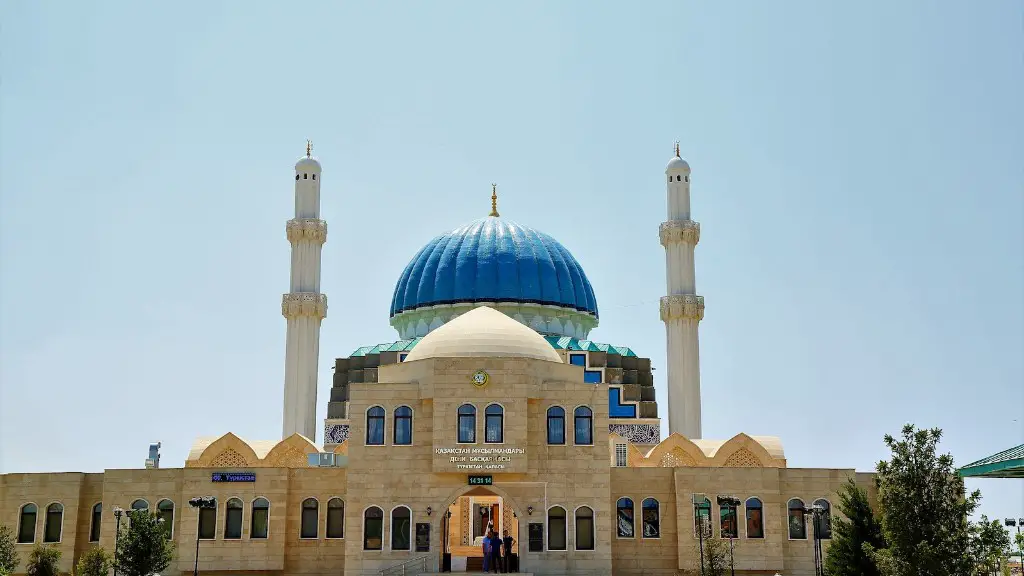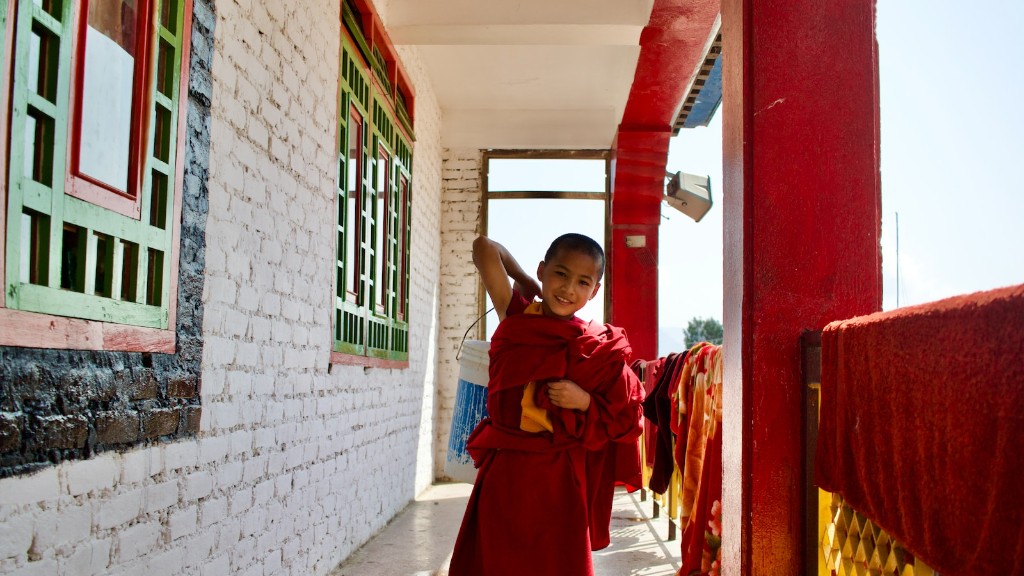What is Mantra in Hinduism
Mantra is a spiritual tool in Hinduism to guide meditations and promote healing. These sound vibrations—rangoli—are far more than just words and phrases. Mantra are syllables, words, and sounds that are blended together as a prayer. Hindus believe these vibrations promote spiritual healing and are used as a technique to clear away obstacles found on one’s spiritual path.
The Sanskrit word for mantra is derived from two roots. The first is “man,” meaning “to think”; the second is “tra,” meaning “to protect.” Thus, a mantra is thought to contain protection in its very essence.
Mantra is not only Hindu. The Vedic mantras are thousands of years old and many can still be found in other religions and spiritual traditions. In many forms of Buddhism and yoga, mantras play an important role in achieving enlightenment. Furthermore, chanting mantras are used in many Christian faiths, both as a form of meditation and prayer.
The effects of mantra chanting are similar to prayer. It is believed that the repetition of these sacred words and sounds opens an individual’s mind and heart to the possibility of realigning their thoughts with the will of the Divine. At the same time, the mantra’s vibration helps to cultivate a sincere concentration of the mind. This can lead to inner peace, joy, and a deeper understanding of ourselves and the divine.
Mantra is a unique form of prayer that has strict rules, even among Hindus. Some mantras are kept secret, only to be known and chanted by the person who is using them. other mantras are known, and can be chanted by anyone. For example, some of the first mantras taught to new Hindus are about the Supreme One, who is called Brahman.
Many Hindus view mantra chanting as a means of connecting with the deities. They use mantras to make requests or to offer thanks and gratitude. In addition, some Hindus use mantras as a form of protection, asking the deities to shield them from evil intentions and protect them from danger.
Mantra is a powerful tool for spiritual growth, no matter what faith you may practice. It can be used to align with the Divine will and help to create positive changes in one’s life. There are no limitations to what you can use mantra for, but it’s important to remember that its power comes from the intention and sincerity of the practitioner.
Understanding Mantra
Mantra chanting is a powerful technique and it’s important to understand the spiritual processes behind it. A mantra is a sound vibration and each individual syllable has its own power. When they are chanted together, these vibrations are amplified and the power of each mantra builds upon itself. This creates a powerful vibration that can affect the physical and mental states of a practitioner.
The power of mantras relies on the strength of a practitioner’s chanting. To get the most out of chanting, mantra should be chanted with inner awareness and attention to their meanings. This helps the practitioner build a connection to the mantra and its spiritual energy.
Additionally, there is no “right” way to chant a mantra. The number of repetitions can vary depending on the individual practitioner. Some people prefer a slow, meditative chanting. Others may chant with a faster and more energetic pace. Ultimately, it’s up to the individual to determine the speed, duration, and energy of the chanting.
It is also important to note that mantras are generally chanted in Sanskrit, though they can also be chanted in other languages. Hinduism has many mantras and the language they are chanted can depend on the region, tradition, and the specific deity that is being invoked.
Though many people chant mantras independent of any other spiritual practice, some people choose to combine chanting with meditation. This can be a great way to gain greater clarity and focus, and make the mantras even more powerful.
No matter what your practice entails, understanding the basics of mantra will help you gain greater insight and spiritual power. Connecting with the vibration of your mantras and incorporating them into your meditations will open the door to a deeper understanding of the sacred power of mantra.
Common Hindu Mantras
Many mantras are attributed to specific gods or goddesses and often invoke one’s relationship with them. It may take centuries to learn the meaning of every Sanskrit mantra, and some may remain a mystery for eternity. However we can gain insight even from the most basic of mantras.
The Gayatri mantra is perhaps the most revered and widely known Hindu mantra. It is used to invoke divinity and offer gratitude. In many practices, it is used to begin or end mantras or used on its own. The mantra speaks to the power of the divine light, the luminous inner teacher:
Om Bhur Bhuva Swah, Tat Savitur Varenyam, Bhargo Devasaya Dheemahi, Dhiyo Yo nah Prachodayat.
In addition to the Gayatri mantra, Hindus may chant other mantras such as the Mahamrityunjaya Mantra, which is often used to heal physical and spiritual ailments. The mantra is associated with the hindu god, Shiva, and is typically chanted three times:
Om Trayambakam Yajamahe, Sugandhim Pushti Vardhanam, Urvarukamiva Bandhanan, Mrityor Muksheeya Mmaamritat
The Shiva Gayatri mantra is said to honor Shiva and his divine energy. It is believed that repeating the mantra will help gain greater insight and understanding:
Om Tatpurushaya Vidmahe, Mahadevaya Dhimahi, Tanno Rudrah Prachodayat
Finally, the Ganesh mantra is used to honor the Hindu god, who is known as the remover of obstacles. This mantra can be used to clear away any blocks in one’s path:
Om Gum Ganapatayei Namah.
Using Mantra
When beginning your practice of mantra chanting, it’s important to respect the power of the mantra and its ancient roots. Never repeat a mantra without knowing its meaning and origin; if you aren’t sure, do research or seek guidance from an experienced practitioner. Furthermore, because Sanskrit is the language of the ancient Hindu mantras, it’s important to learn pronunciation correctly.
Mantra chanting is an individual journey and there is no one-size-fits-all approach. It’s important to find a technique that works best for you. Some people may prefer to chant silently, while others might prefer group chanting. Some people will prefer to use a mala or tasbih, a set of prayer beads, to help them count repetitions. Experiment and find the combination that works best for your spiritual practice.
Mantra chanting is also a great way to relax and bring balance to your mind, body, and spirit. Making this practice a part of your daily routine can help you access an inner peace and joy that will lead to personal growth and spiritual transformation.
Background and Effect of Mantra
Rangoli, or mantra, is considered one of the most ancient forms of spirituality activity. The use of mantra in India dates back thousands of years and was first used by the Vedic culture. Since then, the use of mantra has taken on many forms and is now a cornerstone of Hindu, Buddhist, and Tibetan spiritual practices.
The power of mantra is said to be rooted in the vibration of the mantra itself. It is believed that these vibrations create a harmonious balance in the practitioner’s mind and body. The repetition of the mantra also helps to carry the practitioner in a state of meditation, allowing them to relax and achieve a deeper connection with the divine.
In addition to its spiritual benefits, mantra chanting can also be a great way to reduce stress and anxiety. The meditative state can help to bring a sense of peace and calm, and the chanting of mantras can be very soothing. The power of mantras can also bring a sense of spiritual wellbeing, boosting self-confidence and promoting positive thinking.
Mantra Mantra for Healing
For many Hindus, chanting mantras can be used as a powerful form of healing. Mantras can be used to clear blockages and negative energy from one’s physical and spiritual bodies. Mantra to aid healing often focused on the Hindu deities, often seeking help and protection from violence, illness, or misfortune.
The most common mantras used for healing are mantras to the Hindu gods Lakshmi and Shiva. Lakshmi is the Hindu goddess of wealth, fortune, and abundance. She is often invoked to provide healing and financial stability. The following is a mantra used to call upon Lakshmi:
Om Lokah Samastah Sukhino Bhavantu,
Lakshmi Mata Namostute,
Om Sri Lakshmi Namo Namah
Shiva is the Hindu god of destruction, transformation, and ultimately, spiritual freedom. He is often called upon as a protector and provider of healing, especially in times of physical or emotional distress. Below is a mantra to Shiva:
Om Namah Shivaya
Shri Shiva Sharanam Mamah
Om Namah Shivaaya
Mantra can be an important part of any spiritual practice and is particularly useful for those who are seeking healing. Reciting the divine words of mantras can bring peace, comfort, and clarity in difficult times. Whether you are deeply spiritual or simply seek a calm mind, Mantra can be a powerful aid in your journey.
Conclusion
Hinduism has many mantras and each one serves a different purpose. Since ancient times, mantras have been used to tap into the divine power and invoke the help of the gods. Each syllable carries immense power and the chanting of these sacred sounds can bring healing and spiritual growth. Ultimately, mantra is a powerful tool and when used with intention, it can help bring one closer to the divine.

